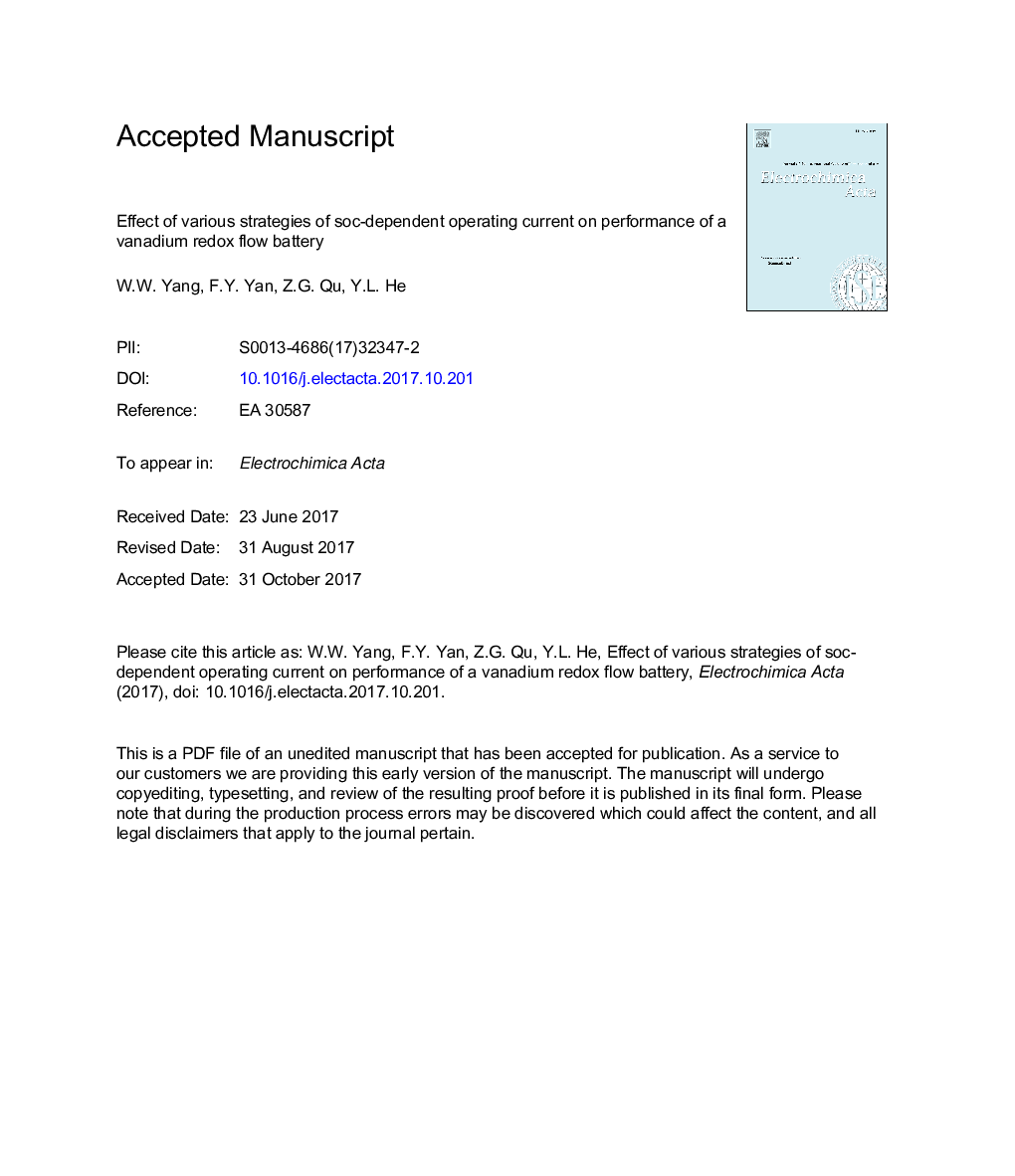| Article ID | Journal | Published Year | Pages | File Type |
|---|---|---|---|---|
| 6604970 | Electrochimica Acta | 2018 | 44 Pages |
Abstract
A two-dimensional quasi-steady-state model is applied to investigate charge/discharge behavior and performance of a VRFB. Emphasis is focused on exploring the influences of various strategies of soc-dependent operating current density on battery performance. For constant-current operation, with the increase of current density, although the system mean power density is significantly boosted, the system capacity and net discharge energy in a cycle are obviously decreased. It is quite difficult to give consideration to both the system capacity and system power simultaneously such that overall battery performance can be improved. Applying the strategy of soc-dependent operating current (i.e., low current at the end of charge/discharge process while high current for the rest time), the system capacity, power density and net discharge energy in a cycle can be simultaneously boosted while comparable efficiencies can be achieved. Optimally, at the mean operating current density of about 70Â mAÂ cmâ2, the system capacity is maximally improved by 9.3% and the net discharge energy is maximally increased by 7.9% as compared with that under constant-current operation. As the same time, the energy-based system efficiency can be maintained over 78%, which is comparable with that for constant-current operation.
Related Topics
Physical Sciences and Engineering
Chemical Engineering
Chemical Engineering (General)
Authors
W.W. Yang, F.Y. Yan, Z.G. Qu, Y.L. He,
